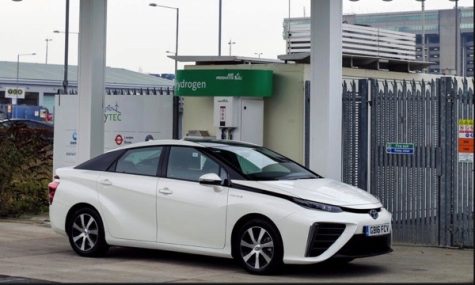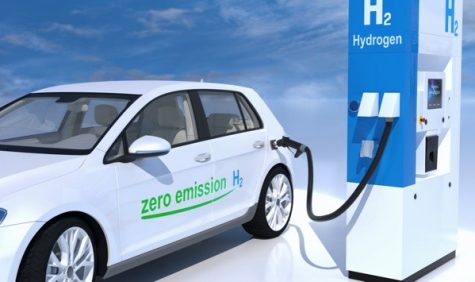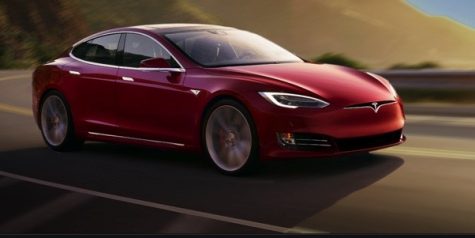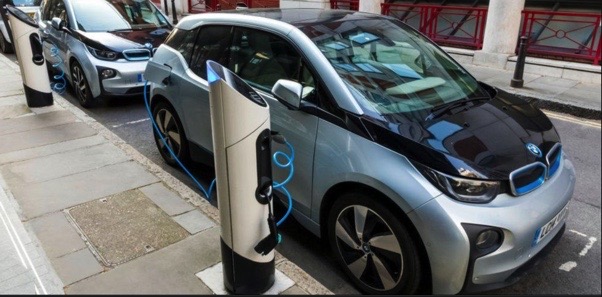Hydrogen Cars Are Losing Against Electric Cars—Why?
With the consequences of climate change coming our way, we have continuously been finding ways to reduce the world’s carbon emissions. One such way is through hydrogen and electric vehicles. Along with Tesla, many other car companies such as Volkswagen Group, BMW Group, General Motors, and Daimler have embraced electric vehicles in some fashion. While various hydrogen vehicles have been announced or released (e.g. the recently announced BMW X5 Hydrogen Fuel Cell or the Toyota Mirai), electric vehicles have clearly been taking the lead. So, what is it about electric cars that makes them the better choice when compared to hydrogen cars?
 At first glance, hydrogen cars may seem like the way to go. Filling up a hydrogen car is just like filling up an internal combustion engine (ICE) car: You pay and fill up at a pump for just a few minutes. “Filling up” an electric car takes longer. The fastest, most widely available charging method is direct current (DC) charging. Direct current charging bypasses the car’s electric converter which lets power go directly into the battery. Depending on the car and the charger, it can charge to about 80% in 15-30 minutes. At this point, hydrogen looks like the clear answer. Because it can fill up just like a fossil fuel car, the logical renewable energy resource for transportation seems to be hydrogen. But, there are additional factors that make electric transportation shine.
At first glance, hydrogen cars may seem like the way to go. Filling up a hydrogen car is just like filling up an internal combustion engine (ICE) car: You pay and fill up at a pump for just a few minutes. “Filling up” an electric car takes longer. The fastest, most widely available charging method is direct current (DC) charging. Direct current charging bypasses the car’s electric converter which lets power go directly into the battery. Depending on the car and the charger, it can charge to about 80% in 15-30 minutes. At this point, hydrogen looks like the clear answer. Because it can fill up just like a fossil fuel car, the logical renewable energy resource for transportation seems to be hydrogen. But, there are additional factors that make electric transportation shine.
First and foremost, electricity is widely available compared to hydrogen when constructing electric charging stations or hydrogen filling stations. Electricity is everywhere, and the charging stations are easy to construct and can be made widely available. On the contrary, hydrogen stations are much more difficult to construct because of the significantly more intricate processes. It is also worth noting that hydrogen is difficult to transport and store. As a result, there are significantly more electric charging stations compared to hydrogen stations. In the United States, there are only a handful of hydrogen filling stations, primarily in California. With electric cars, you can travel almost anywhere in the United States with DC fast charging networks, like the widely available Tesla Supercharger network or the Electrify America network.

A big question that enters the discussion when talking about hydrogen and electric cars is how they perform on road trips. For daily commutes, both hydrogen and electric cars are convenient. Hydrogen cars fuel up similarly to our fossil fuel cars, and electric cars can be charged at home overnight. A daily commute of twenty miles, for example, is no problem for any of these cars, but road trips are a different story. Hydrogen cars perform on road trips just like we’re used to; you stop for a fill-up for just a few minutes. But, with the extremely limited number of hydrogen stations, there are not many places you can go with a hydrogen car. On the other hand, electric cars use DC fast charging stations on road trips. This fast-charging method means that electric cars take only about 15-30 minutes per stop. While this may sound like an inconvenience, it is already a good practice to stop for this amount of time every few hours. On road trip stops, no matter what car you are driving, most people will stop for more than a few minutes to take a bathroom break, get a bite to eat, or just rest for a few minutes to battle driver’s fatigue. With this in mind, it is really not much of an inconvenience to stop for several more minutes, especially when you consider the savings.
From a cost perspective, electric cars win by a landslide. Charging an electric car is substantially cheaper than filling up a hydrogen or a fossil fuel car. Most people in Texas spend about $1,159 on gas annually, and while most hydrogen cars come with a few years of free fill-ups, hydrogen isn’t much cheaper compared to gas after that free period ends. A “fill-up” for an electric car can easily be under $10 depending on the electricity charge rates. Also, it is worth noting that both hydrogen and electric cars have substantially lower maintenance costs compared to fossil fuel cars.

Finally, another major factor between hydrogen and electric cars is efficiency. First and foremost, hydrogen must be produced through a process of electrolysis. Electrolysis is a chemical reaction that separates hydrogen and oxygen. Then, it has to be prepared for transportation. After it finally reaches the machinery of a vehicle, the hydrogen is converted to electricity, which powers the motor and delivers energy to the wheels. The whole process from the production plant to the spinning wheels of a car results in a terrible efficiency of around 30%. Conversely, the process of delivering electricity to electric cars is much more streamlined and efficient, and we have been dealing with electricity for many years already. Electric cars have a much higher efficiency–ranging from 60% to 70%.
One way or the other, we will have to move to renewable energy. In the U.S., transportation accounts for around 30% of the carbon emissions. Whether it’s hydrogen or electric, it is essential that we move to renewable energy. But, there are stark differences between hydrogen and electric cars. The better efficiency, cost savings, minimal infrastructure effect, large charging networks, all make electric cars more favorable for the transition to renewable energy transportation.

Cody is a senior and is actively involved in Keynote, NHS, Robotics, and Yearbook. He is the co-editor of Yearbook in addition to being Co-Editor...

